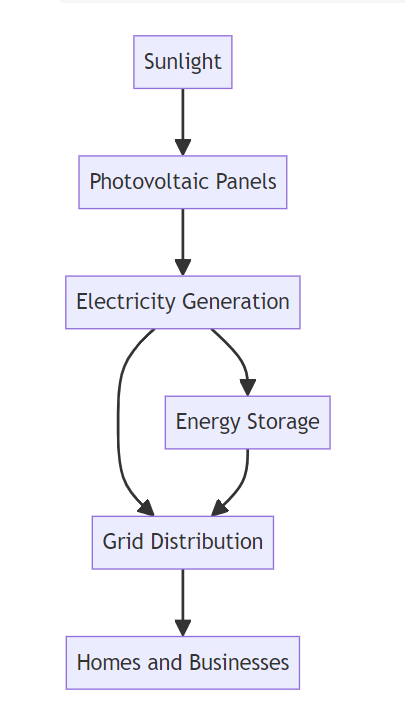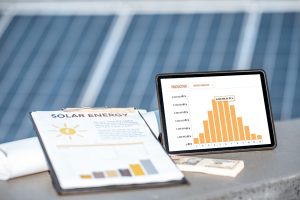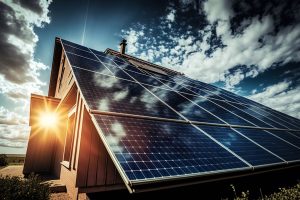
The Importance of Battery Certification
Discover the importance of battery certification for your solar power system. Learn why UL, CE, and CB certifications are essential for safety and performance.
The United Kingdom has been at the forefront of renewable energy adoption, with solar farms playing a pivotal role in reducing the nation’s carbon footprint. As the demand for clean energy surges, the importance of large-scale solar farms has never been more pronounced. Here, we delve into the UK’s largest solar farms, exploring their capacities, locations, and contributions to sustainable energy.
Located in Deeside, North Wales, Shotwick Solar Park is the largest solar farm in the UK. Spanning an impressive 250 acres, this solar park boasts a capacity of 72.2 MW. It is a joint venture between We-Link Energy and Compton Group, demonstrating a successful collaboration between innovative energy companies. The park supplies renewable electricity directly to the nearby UPM paper mill, significantly reducing the facility’s carbon emissions.
Lyneham Solar Farm, situated in Wiltshire, occupies a former RAF base, creatively repurposing the land for sustainable energy production. This solar farm covers 213 acres and has a capacity of 69.8 MW. Operated by British Solar Renewables, Lyneham Solar Farm exemplifies efficient land use and substantial renewable energy output.
Located in Swindon, Wroughton Airfield Solar Park covers 167 acres of land. With a capacity of 67.9 MW, it stands as one of the largest solar installations in the country. The site is a collaborative effort between Science Museum Group and Public Power Solutions, showcasing the potential of combining public and private sector resources to drive renewable energy initiatives.
Kencot Hill Solar Farm, based in Oxfordshire, spans 166 acres and has an installed capacity of 46 MW. It is managed by Foresight Solar Fund Limited. This farm underscores the importance of investment funds in promoting and sustaining large-scale renewable energy projects.
Situated in East Hanney, Oxfordshire, Landmead Solar Farm occupies 200 acres and provides a capacity of 46 MW. The project, developed by Armstrong Energy, demonstrates the scalability of solar energy projects in converting agricultural land into productive solar power generation sites.
The transition to solar energy significantly curtails carbon emissions, contributing to the UK’s commitment to achieving net-zero emissions by 2050. Large solar farms like those mentioned above collectively reduce millions of tonnes of CO2 annually, playing a crucial role in mitigating climate change.
Solar farms not only foster environmental sustainability but also stimulate economic growth. They create job opportunities during both the construction and operational phases. Additionally, they provide a stable income for landowners through lease agreements and support local economies by utilising local services and suppliers.

Modern solar farms utilise advanced photovoltaic panels that offer higher efficiency and durability. Innovations such as bifacial panels, which capture sunlight from both sides, significantly enhance energy output.
Incorporating energy storage systems, such as lithium-ion batteries, enables solar farms to store excess energy generated during peak sunlight hours. This stored energy can be dispatched during periods of low sunlight, ensuring a consistent power supply.
Solar farms are increasingly integrated with smart grid technology, allowing for real-time monitoring and efficient energy distribution. This integration optimises the balance between supply and demand, enhancing grid stability and reliability.
The future of solar energy in the UK is promising, with ongoing advancements in technology and supportive government policies. The expansion of solar farms and the development of new projects are expected to continue, driven by the need for sustainable and renewable energy sources.
Government initiatives, such as the Contracts for Difference (CfD) scheme, provide financial incentives for renewable energy projects. These policies are pivotal in encouraging the development and expansion of solar farms across the UK.
Community solar projects are gaining traction, allowing local communities to invest in and benefit from solar energy. These projects not only promote renewable energy but also enhance community engagement and awareness.
The UK’s largest solar farms are at the vanguard of the renewable energy revolution, setting benchmarks for sustainability and innovation. As these solar farms continue to grow and evolve, they will play an increasingly vital role in the nation’s energy landscape, paving the way for a greener, more sustainable future

Discover the importance of battery certification for your solar power system. Learn why UL, CE, and CB certifications are essential for safety and performance.

Discover the truth about solar panels and fire hazards. Learn what causes solar panels to catch fire, how you can prevent it, and what to do in case of a

Discover the truth about solar panels and fire hazards. Learn what causes solar panels to catch fire, how you can prevent it, and what to do in case of a